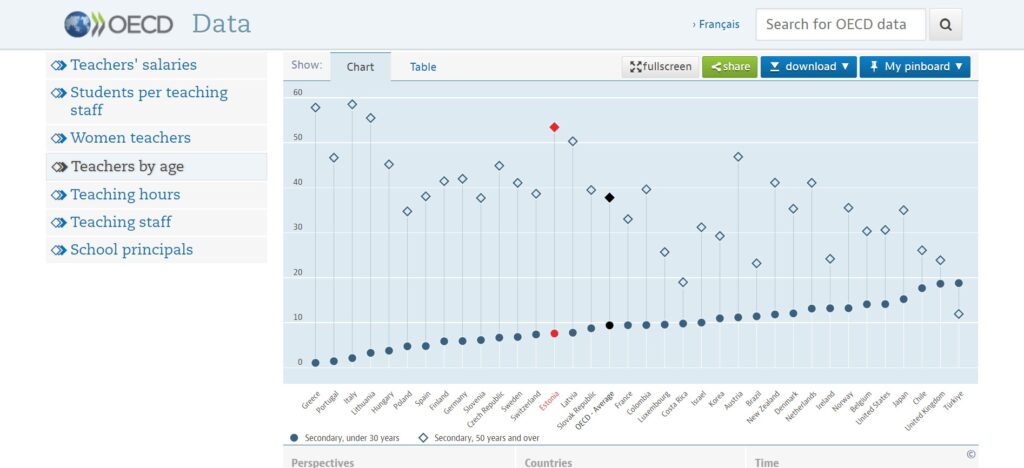Transition to Estonian as the language of instruction and the influx of Ukrainian refugees are set to exacerbate the problem of finding new teachers across Estonia, the Foresight Centre – a think tank at the Estonian parliament – says.
The Head of the Foresight Centre, Tea Danilov, said the situation of teachers in Estonia had so far been studied mainly through the focus of low salaries, but the reality is much more varied.
“The future of the teaching profession depends on how we talk about the profession, what is the working culture and class climate, and what are the growing expectations of parents and the society to the teachers today,” Danilov said in a statement.
The Foresight Centre is currently analysing the current trends from the perspective of teachers, students and schools, and outline possible future scenarios. The centre will additionally focus on the regional policy perspective, proceeding from the need to reorganise Estonia’s school network based on student numbers and population placement.

The teaching job increasingly challenging
The centre will also analyse the career choices of teachers and outlooks for the future.
“The younger generation has a new way of approaching the labour market – frequent changing of jobs and careers is common nowadays, as is the expectation of more flexible working relations. This raises the question of how we could ensure a stable future for the teaching profession when the new generations of teachers change jobs more frequently than the older ones and gig work has taken the labour market by storm,” Eneli Kindsiko, an expert of the centre, said.
A growing number of studies is showing that the daily work of a teacher in the classroom and school is becoming increasingly challenging, which is another reason for young teachers to leave schools.
“Classroom climate, disciplinary problems of students, and overly critical parents have their impact on teachers staying in schools and new teachers coming in. The teaching profession is also one of the best examples of five generations – teachers between the ages of 20 and 70 – working together in one organisation, and this also sets new challenges to both teachers and school managers,” Kindsiko added.

Only one in three teachers feel digitally competent
Applying digital means to learning is a growing requirement today, but only one in three teachers feel digitally competent enough. It further complicates teaching in schools that the students are often significantly more technologically literate than the teachers.
The Foresight Centre looks at the factors that impact the future of the teaching profession and outlines the possible future scenarios on the need for and the numbers of new teachers until 2040.
Estonian teachers are some of the lowest paid among the OECD member states and their average age (53) is one of the oldest among the developed countries.
Read also: Madis Somelar: Estonian teachers are treated like 19th-century factory workers

